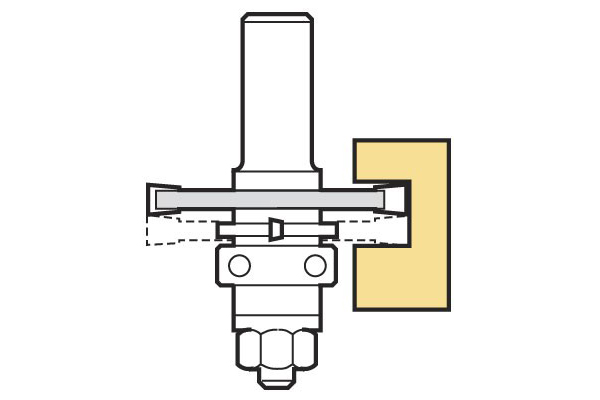What are the different types of slotting &grooving router cutter? |
||||
 |
||||
|
|
Slotting and grooving cutters consist of a single cutter with parts mounted on an arbor. Most types allow you to rearrange parts on the arbor to produce different cuts.
There are three main types of slotting and grooving cutter: |
|||
Jointing cutters |
||||
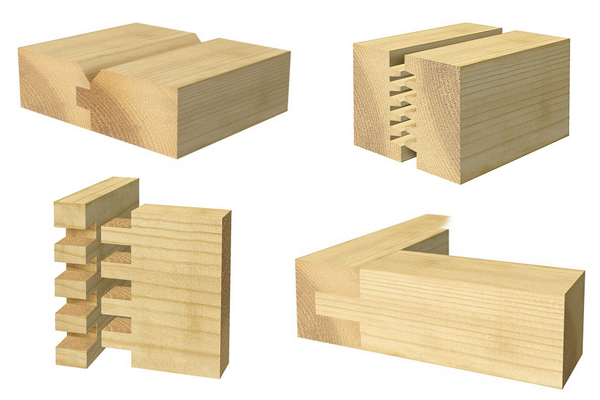 |
Jointing cutters are used in the production of various joints, such as comb joints.
There are five main types of jointing cutters, most of which have straight sided groovers. However, some, such as the finger jointer cutters, have groovers with angled cutting edges. |
|||
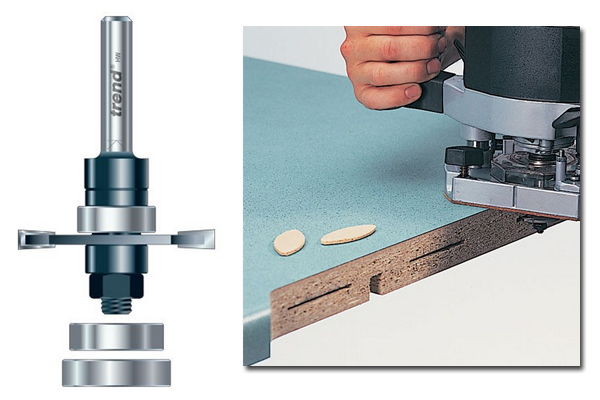 |
Biscuit jointersBiscuit jointer sets, as the name suggests, are designed to cut the grooves of a biscuit joint. |
|||
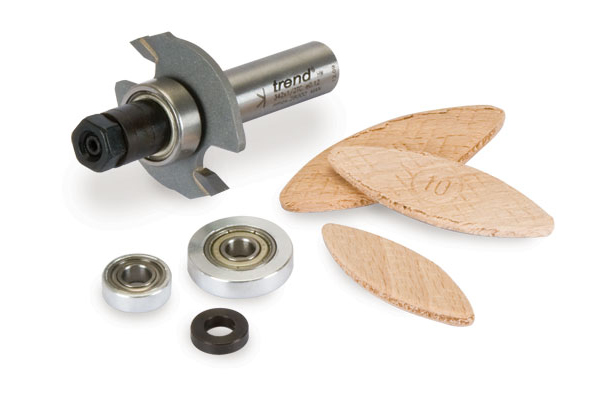 |
They are usually supplied with three bearing guides of different diameters, to suit the three common biscuit sizes of 0, 10 and 20. Alternatively, there are dedicated power tools called biscuit jointers that are ideal if you need to produce biscuit joints regularly. |
|||
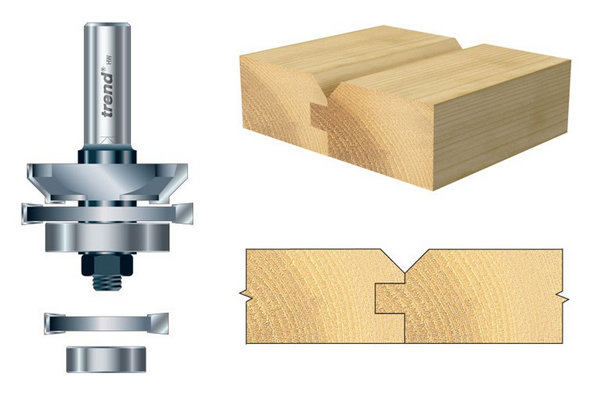 |
Matchlining cuttersThese cutters are used to produce matchlining joints. The square-tipped cutter produces the groove while the angled profile block cuts the V-joint profile. |
|||
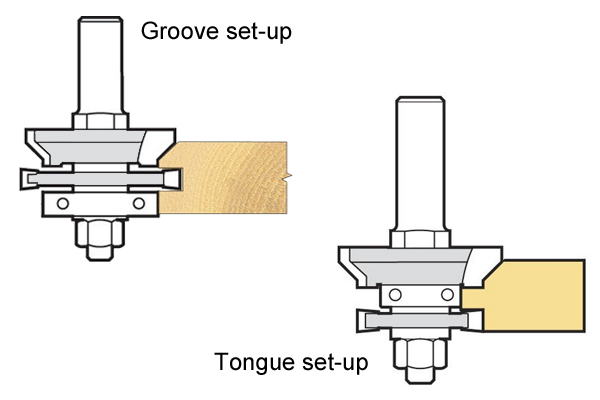 |
To cut the tongue part of the joint, the square-tipped groover is exchanged for one of a different diameter (usually supplied) and the guide bearing is repositioned on the arbor. Please note: the groove should be routed first as it is easier to adjust the tongue to fit the groove compared with the other way around. |
|||
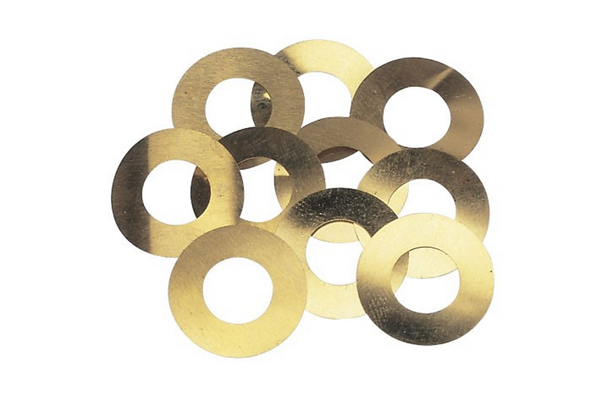 |
Matchlining sets are often supplied with a set of shims. These are used when changing the cutter to the groove set-up, but can also be added or removed to create a tight or loose fitting joint and to adjust after resharpening. |
|||
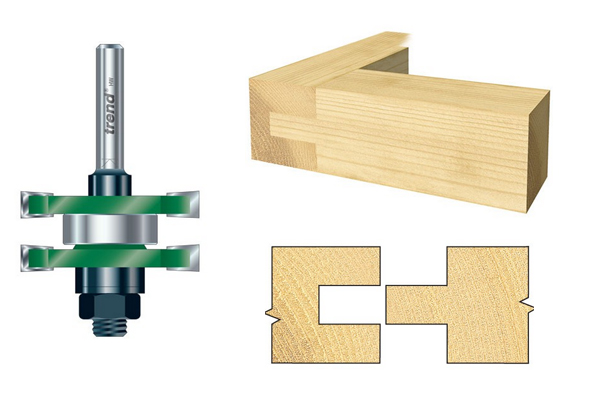 |
Tongue and groover setsThese cutters are designed to produce a tongue and groove joint. As with matchilining cutters, these are often supplied on tongue mode and will require parts to be rearranged on the arbor in order to rout the groove.
Tongue and groove joints are also typically supplied with a set of shims. |
|||
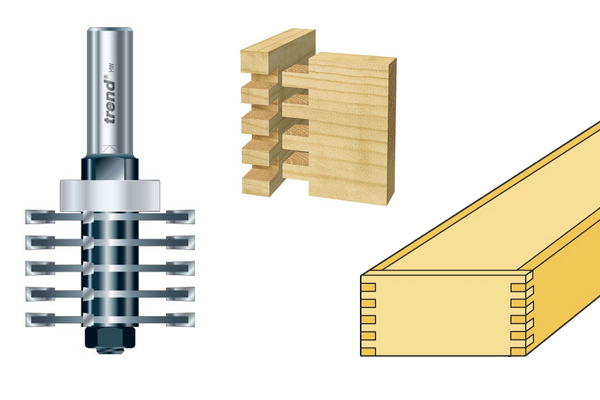 |
Comb jointer setsare comprised of several, equally spaced, groovers mounted on the arbor, and, as the name suggests, are designed for producing comb joints. |
|||
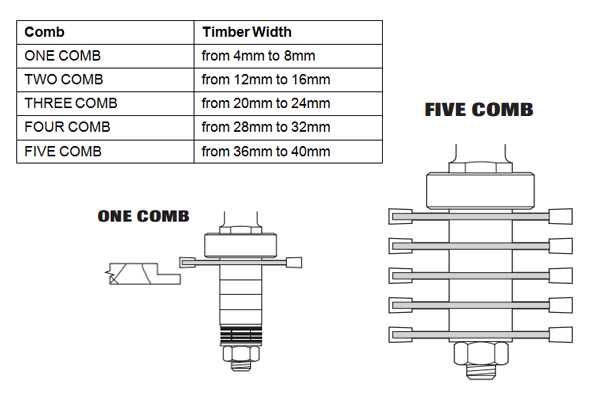 |
Material widthDepending on the width of your material, these cutters can be assembled to cut one, two, three, four or, five comb joints. |
|||
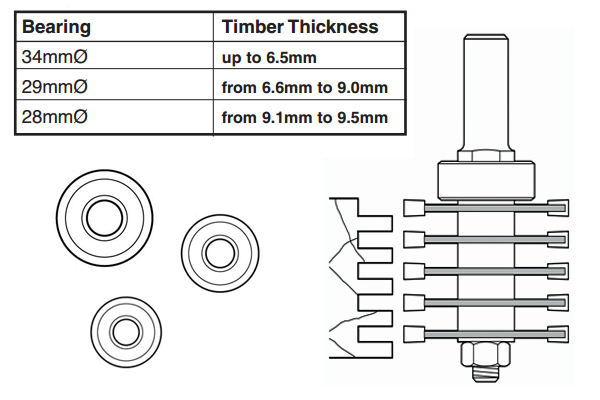 |
Material thicknessThey are also supplied with three bearings of different diameters, in order to alter the depth of cut to match your material thickness. |
|||
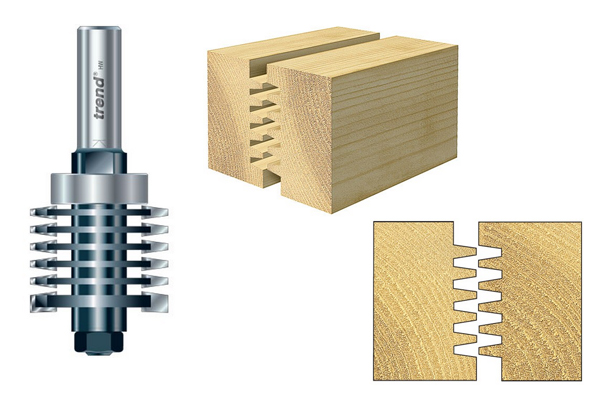 |
Finger jointer setsThese sets consist of several carbide-tipped finger groovers which, together with an abutting edge cutter, are used to create finger joints.
Both parts of the joint can be cut without the need to reassemble the cutter. After having made the first cut, the second cut is carried out by inverting the wood. |
|||
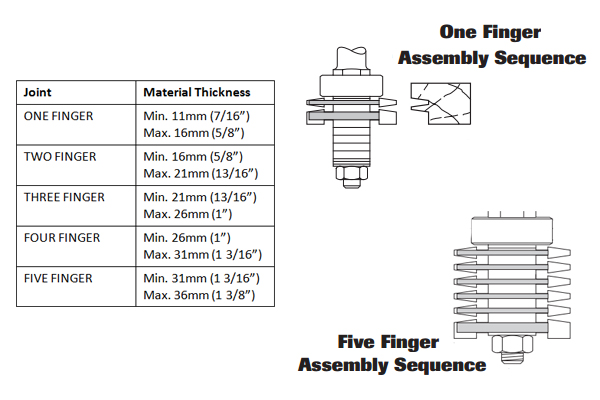 |
As with a comb jointer set, finger jointer sets can be reassembled to cut between one and five finger joints, depending on your material's thickness. The and the Professional TCT range has a and a |
|||
Groover sets |
||||
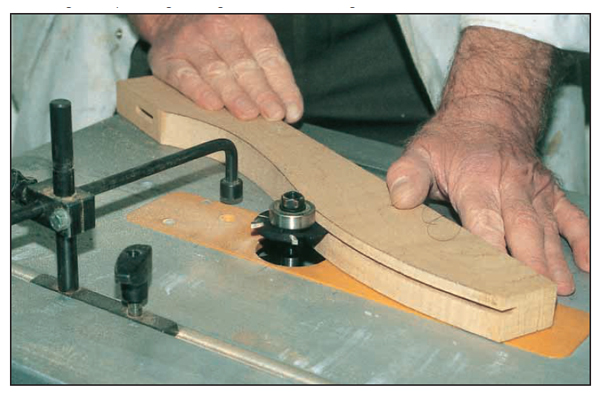 |
Groover sets contain straight-sided groovers only and are used for producing grooves. There are two main types: |
|||
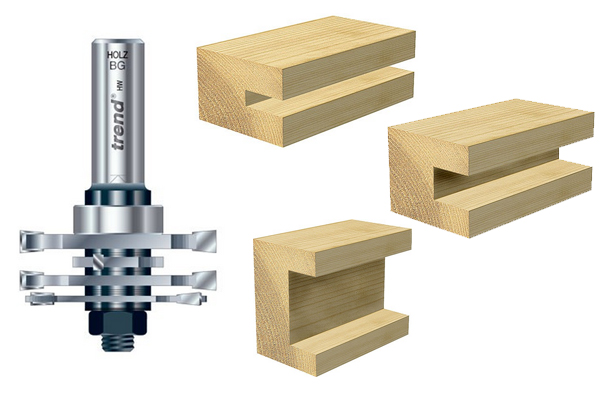 |
Quad groover setsare supplied with four 2-wing groovers of different thicknesses, which can be used on their own or combined to produce a wide range of groove widths. When used singularly, the groovers can be used to produce widths of between 3.2mm (1/8") and 6.35mm (1/4"). By combining groovers, widths of between 5.7mm and 18mm can be achieved. |
|||
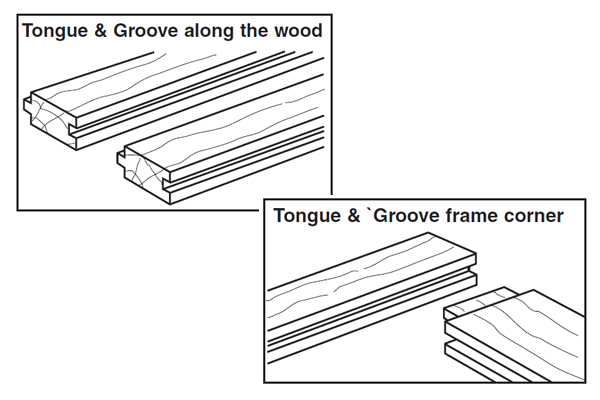 |
Tongue and groove joints can also be created, either along the length of material (for jointing, aligning, or cladding) or to produce frames (for doors, windows or pictures). |
|||
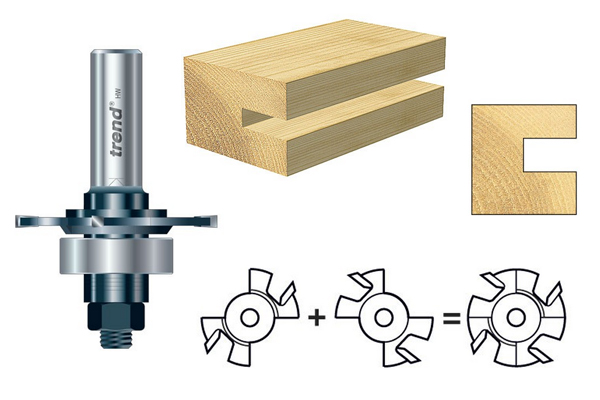 |
Variable kerf cuttersThese cutters come with a groover in two halves - which can be joined to produce a particular cutting width (or kerf), or separated with shims or spacers, in order to produce widths of varying sizes. Amongst many applications, these cutters are ideal when preparing grooves for jointing, when the fit needs to be precise. |
|||
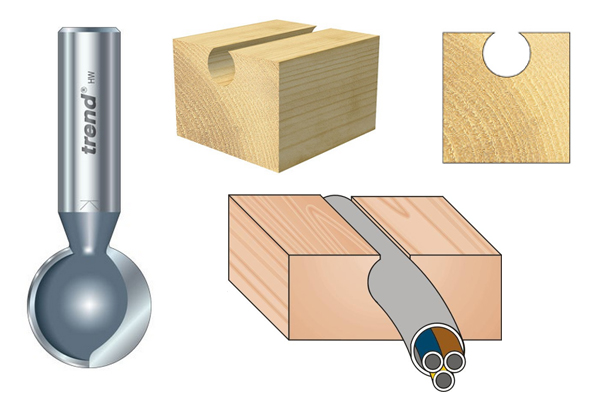 |
Ball groover cuttersBall groover cutters are spherically shaped and primarily designed for routing long channels for the purpose of concealing wires, pipes, or cables.
These channels are often formed on the back of strips of molding or beading. |
|||
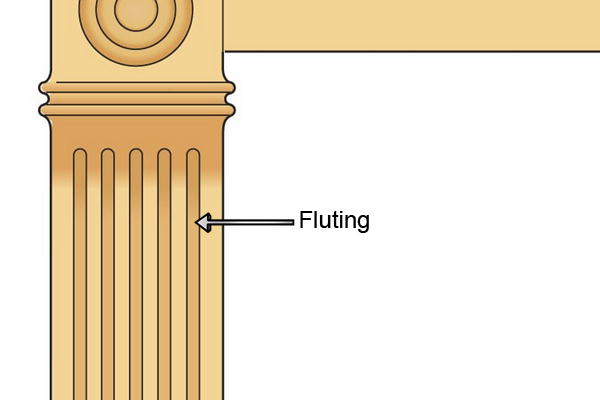 |
Ball groovers can also be used to produce curves for decorative applications such as fluting. |
|||
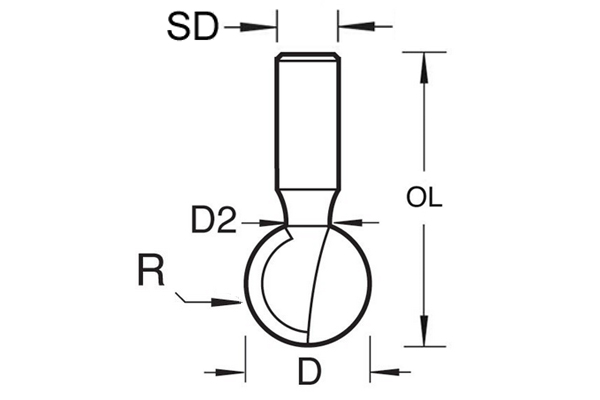 |
Ball groover cutters are available in the following sizes: Shank diameter (SD): ½" Overall length (OL): 58mm (2 9/32") to 75mm (2 61/64") Min. diameter (D2): 12.7mm to 32mm (1¼") Max. diameter (D): 6.5mm to 12.7mm Cutting edge radius (R): 6.35mm to 16mm |
|||
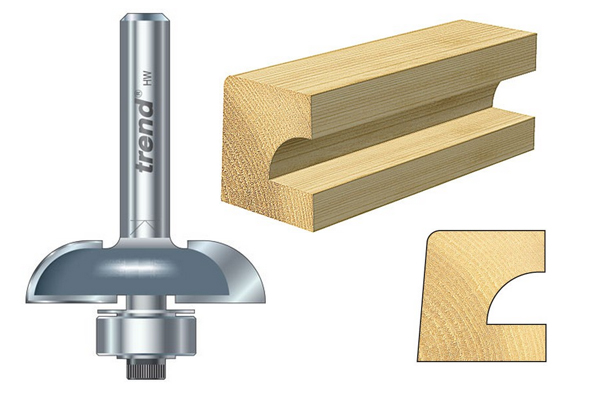 |
Capillary groove cuttersare designed to produce radiused grooves (known as capillary or drip grooves) in window and door joinery, for the purpose of draining off water.
They are supplied with ball-bearing guide beneath the cutting edges, which can be replaced with a smaller or larger one, in order to obtain a shallower or deeper cut. |
|||
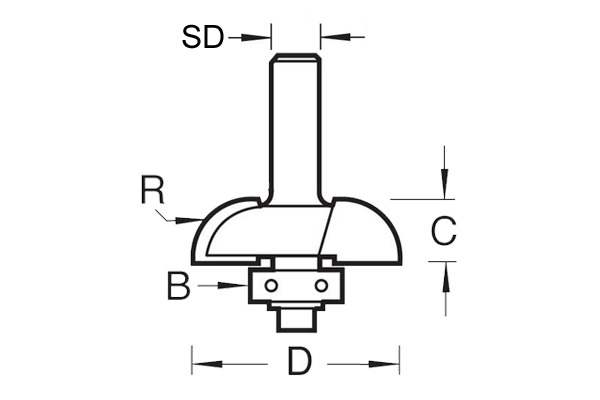 |
are available in the following sizes: Shank diameter (SD): ¼" (6.35mm) Diameter (D): 28.7mm (1⅛") Cutting edge length (C): 8mm (5/16") Cutting edge radius (R): 8mm Guide bearing diameter: (B): 12.7mm (½") |
|||
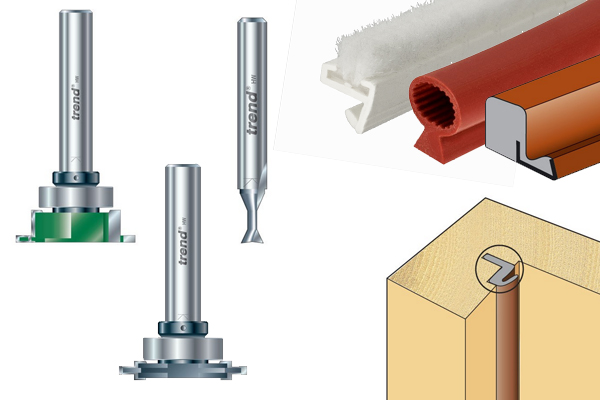 |
Weatherseal cuttersWeatherseal router cutters are designed to rout the recesses into which weatherseal strips are fitted. There are several different types of weatherseal cutter, suitable for the various types of weatherseal strip. For more information see: What are the different types of weatherseal cutter? |
|||
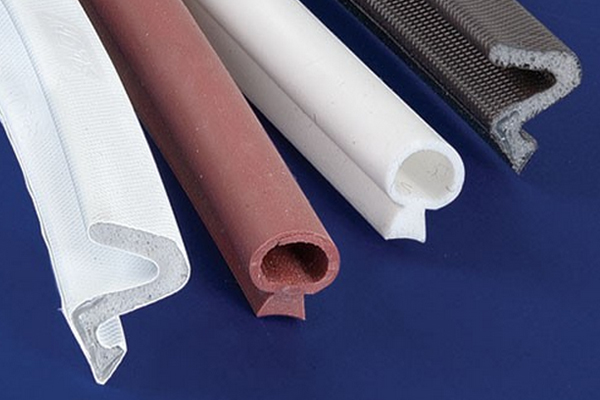 |
Intumescent and smokeseal strip recesser cuttersIntumescent strips are recessed into doors to provide protection against smoke and heat if a fire breaks out. Heat causes the strip to expand and seal off the gap between the door and the frame. They must be fitted around fire doors for the door to match its fire rating. |
|||
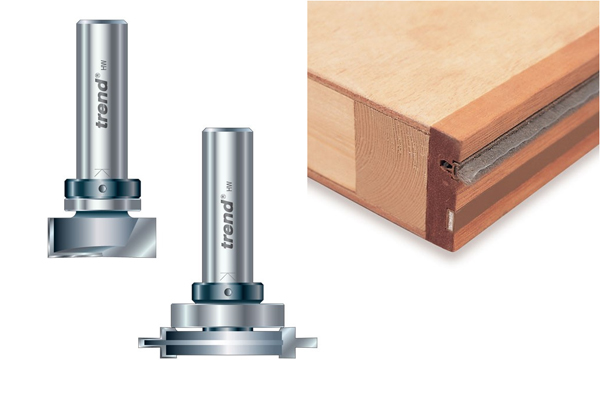 |
Intumescent and smoke seal strip recesser cutters are provided in a range of sizes to match the width of teh strip you will be fitting. 15mm is the most common as it's the standard size fitted to most new fire doors. |
|||
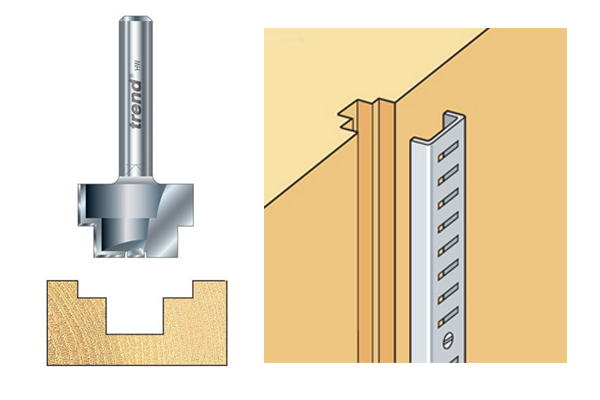 |
Tonk strip cutters (rebater)These cutters are designed to cut a stepped recess for a shelf support strip (also known as a tonk strip). |
|||
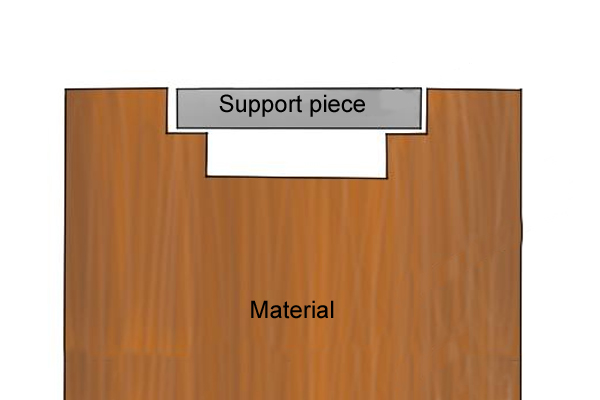 |
The top half of the stepped recess should be the same depth as the shelf support strip you wish to fit. This is so that when fitted, the strip rests on the step of the recess and lies flush with the surrounding material. |
|||
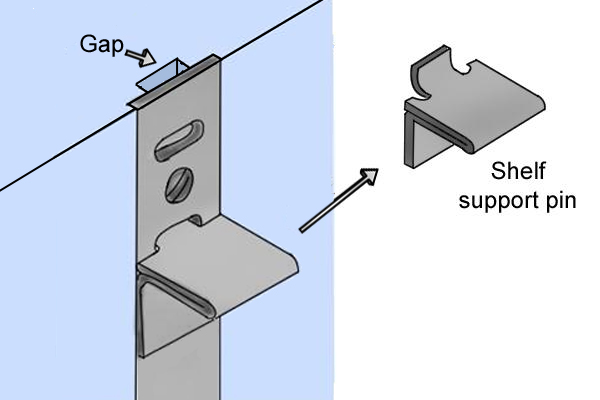 |
The bottom half of the recess should allow a space between the back of the support strip and the material, so that a support pin can be hooked through the gap of the strip, in order to support a shelf. |
|||
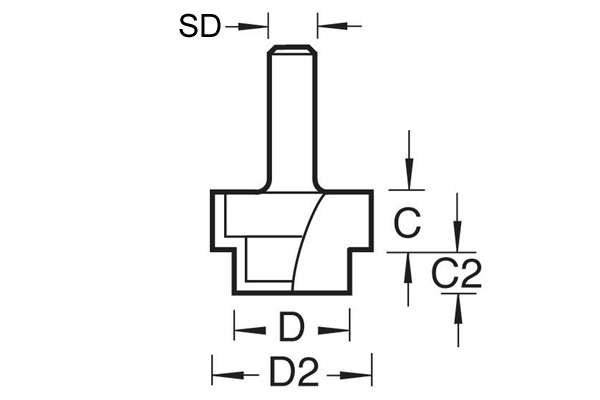 |
Tonk strip cutters are available in the following sizes: Shank diameter (SD): ¼" and ½". Diameter (D): 9.5mm (⅜") to 16mm. Diameter (D2): 19mm - 22mm (⅞"). Cutting edge length (C1): 8mm to 13mm. Cutting edge length (C2): 6mm. |
|||
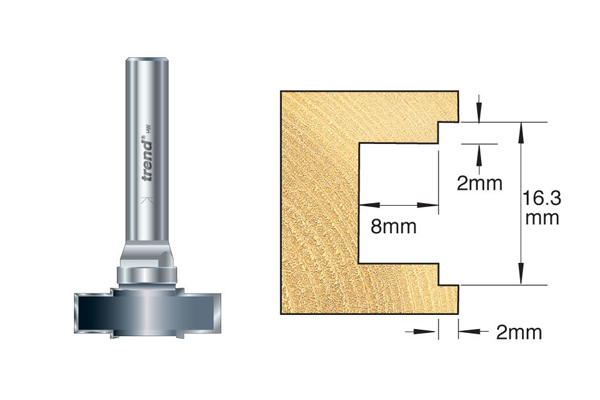 |
Espagnolette cuttersare used to create recesses for espagnolette locks, which are often used in window frames. As these locks are produced universally in the same sizes, the cutters are available in one size only. The groove that they create allows room for the locking mechanism in the main channel, with a double rebate to allow the locking strip to sit flush with the edge of the window. |
|||
Slotter sets |
||||
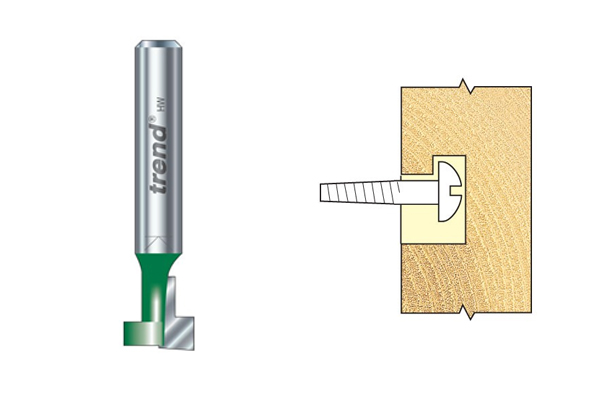 |
Keyhole slotter cuttersThese cutters are used to create slots in frames that will allow you to hang a picture flush with a wall. They feature an internal lip that rests behind a screw head and holds the picture securely in place. This is created by plunging the router into the frame and moving it to one side to cut the lip. The cutter is then returned to its original position before it is removed from the hole. |
|||
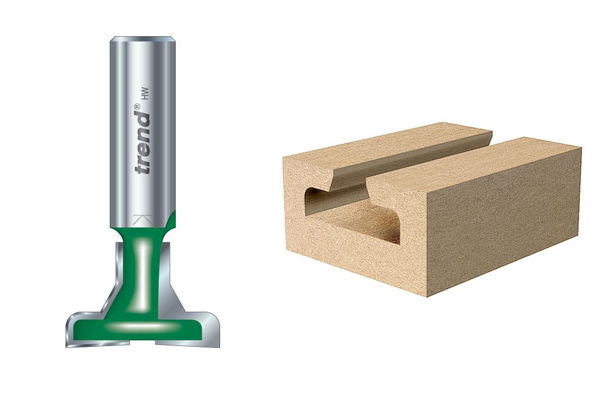 |
T-slotters and slat wall cuttersT-slotter cutters and slat wall cutters are used for making grooves in slat walling panels. The large recess behind the visible opening allows shelves to be securely attached with little effort. The cutter size guide always lists two diameters. The first (D) is the diameter of the cutters at the tip, which will be the same as the wide recess inside the slat wall. The second (D2) is the diameter of the cutter closest to the shank, which tells you the width of opening that will be created. |
|||
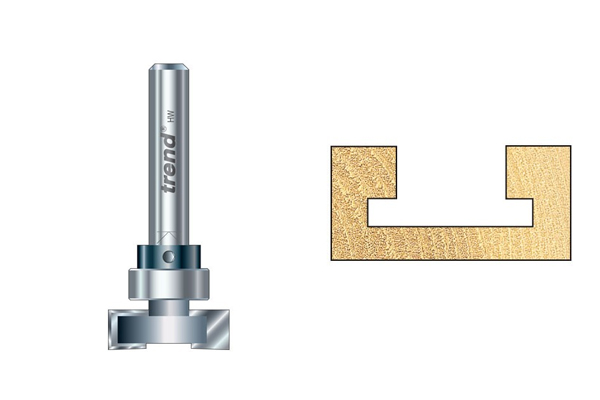 |
Undercut slottersUndercut slotters can be used for decorative features (such as lettering) that are cut in relief, creating a groove around the base to really make them stand out. The bearing mounted on their shank allows them to follow edges without the user having to worry about routing freehand. |
|||






